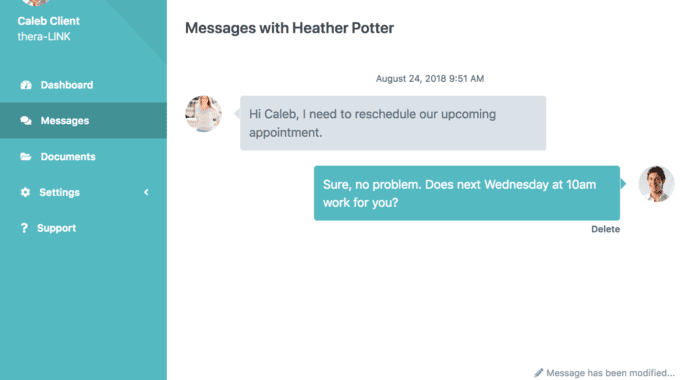Telehealth Couples Therapy: Benefits, Considerations, and Insightful Questions
Telehealth couples therapy grew dramatically in use over the last year due to the Coronavirus pandemic. Providers and patients of all kinds were forced to switch to virtual services at the start of quarantine and have continued to visit on this format even though the spread of the virus has slowed down. As more individuals get their vaccines, more in-person gatherings will be permitted, but that does not necessarily mean people will stop using telehealth.
In fact, many telehealth couples therapy clients plan to continue with virtual visits despite the end of the pandemic. So what benefits of telehealth couples therapy and what cons should providers consider moving forward?
Pros of Telehealth Couples Therapy
Easily Accessible
One of the most important benefits of telehealth couples therapy is that it is much more accessible for all kinds of clients. Traditional, in-person therapy demands a certain level of time commitment that is not always realistic for some couples. For example, it is not always simple to drive to therapy after the workday, especially if couples have children or responsibilities. This time commitment can be discouraging for couples who need therapy.
Telehealth couples therapy narrows down this time commitment substantially. It eliminates the need for travel and time away from work/responsibilities and takes less time to complete on average. Couples are much more likely to seek out services if it offers minimal inconvenience.
Comfortable Environment
For many, telehealth couples therapy creates a safe and comfortable environment. Sitting in an unfamiliar setting can make individuals feel uncomfortable or like they cannot be themselves. This feeling is much less likely to happen when a client feels comfortable in their home. Telehealth couples therapy helps some clients feel ready to open up, especially if they know they can just shut off their computer and walk away at the end of it.
Skill Translation
A common concern for providers is that skill development might be hard to translate into a virtual setting. With telehealth couples therapy, this is not a concern. Many of the communication skills can actually improve through the practice taking place in the environment in which they are to implement it later on. For example, if a provider has a couple practice a communication style over telehealth couples therapy, practicing it in their home can help build retention and make it easier for them to remember what they learned in the future.
Creates New Opportunities
Telehealth couples therapy can actually open up new opportunities to work with clients that previously did not have a way to attend in-person sessions. For example, if a couple is in a long-distance relationship, telehealth couples therapy makes it possible for the two to still meet with a mental health provider without having to be together in person. Another example where this would help might be for couples where one partner travels often.
Cons of Telehealth Couples Therapy
Environmental Disruptions
There is a chance that holding telehealth couples therapy may lead to environmental disruptions that do not exist in office. These disruptions might include kids, pets, shared living situations, outside construction, and more. One of the most common disruptions includes having ones phone out during a session or even their email up in a different tab.
Providers should make sure that their clients are able to minimize environmental disruptions before suggesting telehealth couples therapy.
Lack of Intimacy
Some are concerned that telehealth couples therapy may lead to a lack of intimacy during sessions. Examples of this might include thin walls where others in their home can hear or just the lack of in-person communication that creates its own kind of social intimacy.
This should not be a huge concern for providers as long as they work hard to create a safe environment for their clients and communicate with them just as they would in office.
Considerations for Providers
Safety
Telehealth couples therapy may not be the safest option for clients depending on the situation. If there is a history of physical conflict, it might not be in the best interest of the clients to meet virtually where the provider cannot intervene.
Conflict Level
Depending on the conflict level of the couple, a physical setting might be the best option. Again, couples at risk for violence or in a situation where conflict may rise to an unsafe level would be better to meet in person.
Questions to Ask Clients During Sessions:
How long have they been together?
What led you both to seek professional help?
Have you ever been to couples therapy?
What is each of your expectations for your time here?
What do you each view as the biggest obstacle in your relationship?
What made you fall in love?
What positive qualities exist in your relationship?
Do you feel close to your partner?
When you fight, what issues come up most frequently?
Do you trust your partner?
What are things you love about your partner?
Where do you see your relationship in 10 years?
Goals for Couples Therapy:
- To Better Understand Your Partner
- Identify Each Other’s Fears
- Explore Compromises
- Learn how to Manage Each Other’s Differences
- Learn Empathy for your Partner
- Identify Rooted Issues
- Learn Skills for Navigating Conflict
- Share Honestly
- Learn the Needs of Your Partner
- Problem Solving Skills
- Team Building Skills
- Rediscover Old Feelings







